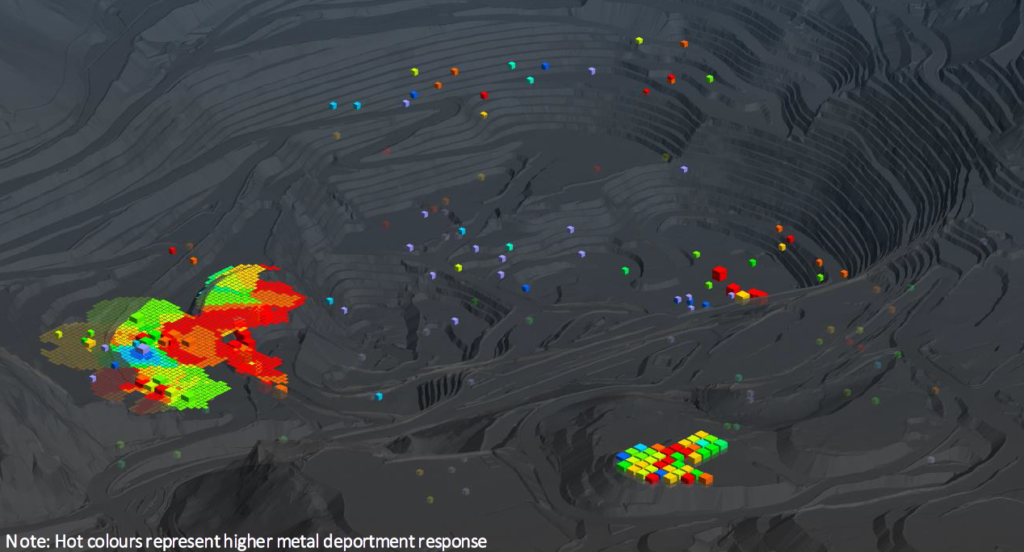There are a number of potential technology opportunities to effect up-front gangue rejection in the minerals sector. CRC ORE has been working with several of its mining participants to assess the efficacy of a range of such technologies, assessed across a variety of operations and commodities. Its “Grade Engineering®” approach references a suite of integrated technologies to effect gangue rejection across several separation “levers” – dependant on the textural amenability of the ore domains concerned.
A paper given at MEI’s Physical Separation 2019 conference in Falmouth, UK detailed recent implementation trials of Grade Engineering® at the Sumitomo-owned Minera San Cristóbal operation in Bolivia. This Pb/Zn/Ag mine operates with some of the lowest head grades in the Industry – yet ranks as one of the most profitable. The implementation strategies at the site trails were presented and the upgrading of “mineralised waste halos” to ores detailed.
Grade Engineering® is an integrated approach to coarse separation (10 mm-100 mm) and rejection of ore and gangue components, that matches a suite of separation technologies to ore specific characteristics. The efficacy of gangue rejection mechanisms is highly dependent on the amenability (or otherwise) of intrinsic ore texture to a particular “sorting’ technique deployed. Thus, there are a number of integrated technology suites or “levers” that can be deployed (either singly or in combination), to achieve effective Grade Engineering®.
On the basis of these highly favourable test work predictions on the amenability of the material to this approach, a production trial was planned and enacted in mid to late 2018. The trial comprised identifying ~200,000 t of mineralised waste in the pit which was due to be extracted between April and August 2018. To identify the “hotspot” zones in the pit a further stage of meso-scale sampling was undertaken. This program of testing followed the same laboratory procedure as previously outlined for the bulk samples. In total 40 ~500kg samples were obtained from different muckpiles in the pit. These samples were then processed at the onsite laboratory to obtain the metal deportment responses. The responses were then kriged into the block model to increase the granularity of metal department response at MSC.
To filter these identified hotspot zones, the target ores for the trial, each block in the block model was populated with a Response Ranking number which was obtained from previous variability testing. The Net Smelter return (NSR) for each block was calculated. The next steps were to calculate the Grade Engineering® NSR of the remaining blocks at a mass pull of 25% to the fines; intersect the positive NSR blocks with the short term mine plan and select blocks to target for the trial.
To conduct the trial a Metso Lokotrack system was purchased and deployed as the screening unit involved. The screening unit utilised was a dual deck screen with screening apertures of 70 mm and 19 mm. The screen was operated over a four month period screening a total of 70,000 t of ore from the 200,000 t stockpile. Continuous sampling of the three screen products was undertaken. A sub-sample of the coarse, middling and fine fraction was taken every hour during operation. The sub-samples were then combined into a daily composite of each of the three fractions. These daily composites were sent to the on-site laboratory where they were re-screened to determine screening efficiency and obtain a metal deportment measurement for each day.
Preliminary results indicate a significant financial opportunity exists in converting these low-grade marginal and mineralised wastes to ore feed. Some two thirds of the total metal value of this material reports to 25% of the “Grade Engineered” mass – contained in the -19 mm fraction. The production trial utilising a mobile screening plant being fed with ROM ore indicated an upgrade of 2.67 times for NSR, with all three elements displaying strong preferential deportment signatures. Utilising this upgrade response in the intrusive rocks, a new mine plan was developed that showed the benefit to Minera San Cristóbal is $451 million in profit and has the potential to increase mine life by two years. This return allows for all the costs associated with the re-handling and material movement of the “Grade Engineered” product. Future areas of investigation will focus on applying the outcomes of the current work to investigating waste engineering options of the currently available mineralised stockpiles and waste dumps.
The methodology outlined provides the opportunity to assess “hidden value” at any given operation. All the new ore feedstock in this case would have been classified as sub-economic low-grade ore or as mineralised wastes. Their exploitation has the potential to enhance the financial return of an operation and therefore unlock additional value from material that would have to be mined anyway.











